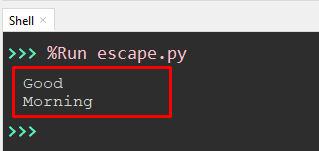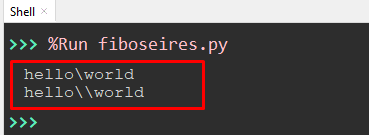Printing escape characters in Python can be a daunting task, especially for beginners. Escape characters are used to represent special characters in a string, such as newline, tab, or backspace. In this article, we will explore the ways to print escape characters in Python, making it easier for developers to work with strings.
Understanding Escape Characters
Escape characters are used to insert special characters into a string. They are represented by a backslash (\) followed by a character. For example, `\n` represents a newline, `\t` represents a tab, and `\b` represents a backspace. Python provides several ways to print escape characters, and we will discuss them in detail.
1. Using Raw Strings
One way to print escape characters is by using raw strings. Raw strings are denoted by the `r` prefix before the string. When you use raw strings, Python treats the backslash as a literal character, rather than an escape character.
```python
print(r"\n") # prints \n
print(r"\t") # prints \t
```
2. Using Double Backslash
Another way to print escape characters is by using double backslash (`\\`). When you use double backslash, Python treats the first backslash as an escape character, and the second backslash as a literal character.
```python
print("\\n") # prints \n
print("\\t") # prints \t
```
3. Using Unicode Escape Sequence
You can also use Unicode escape sequences to print escape characters. Unicode escape sequences are denoted by `\u` or `\U` followed by the Unicode code point.
```python
print("\u000A") # prints newline
print("\u0009") # prints tab
```
4. Using the `encode()` and `decode()` Methods
You can also use the `encode()` and `decode()` methods to print escape characters. The `encode()` method encodes the string into bytes, and the `decode()` method decodes the bytes back into a string.
```python
print("\\n".encode().decode()) # prints \n
print("\\t".encode().decode()) # prints \t
```
Printing escape characters in Python can be challenging, but with the right techniques, it can be made easier. In this article, we discussed four ways to print escape characters: using raw strings, double backslash, Unicode escape sequences, and the `encode()` and `decode()` methods. By mastering these techniques, developers can work with strings more efficiently and effectively.
Best Practices
Use raw strings when working with file paths or regular expressions.
Use double backslash when working with strings that contain escape characters.
Use Unicode escape sequences when working with Unicode characters.
Use the `encode()` and `decode()` methods when working with bytes and strings.
By following these best practices and using the techniques discussed in this article, you can become proficient in printing escape characters in Python. Whether you are a beginner or an experienced developer, this guide will help you master the art of printing escape characters in Python.




.jpg)



